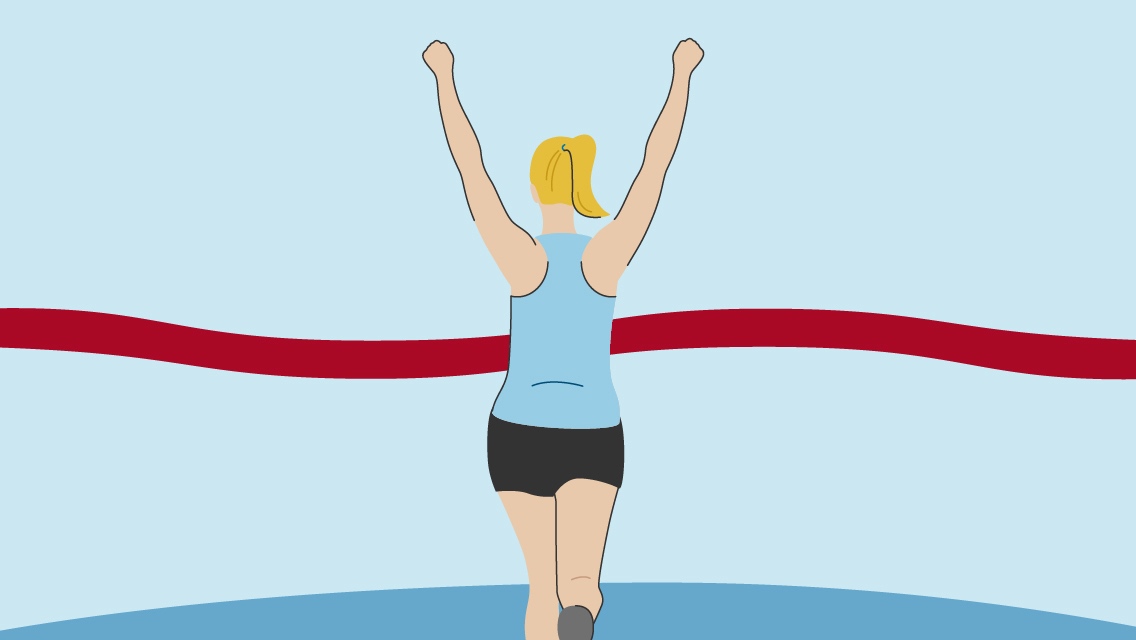For as long as I can remember, the “one-behavior-at-a-time” approach has been deemed the gold standard when it comes to weight loss.
Habit change is hard, and with the average American overstressed and overtired, the thought of changing too much of their current lifestyle can sound unbearable, no matter how motivated they are to lose weight. And for most people, there is a laundry list of healthy habits they’ll need to embark on and practice repeatedly before they start to have a noticeable effect on fat loss.
However, some research has suggested that we might be underestimating our capacity to change and that in some cases, focusing on only one behavior at a time can lead us down a path of frustration.
If habit-by-habit change is something that has never worked for you when attempting weight loss, you might be due for a full-on habit overhaul.
One Habit at a Time
It’s been estimated that it can take at least 21 days before turning a practice into a full-blown habit.
In the case of weight loss, there are typically several habit changes required to drive results. Because of this, many weight loss and nutrition programs and professionals use the strategy of habit building — selecting one healthy behavior for a person to work on and not incorporating additional change until the one preceding it becomes habit.
For example, a given program may focus on having you drink eight cups of water each day for weeks, doing so until it becomes engrained and before you start practicing eating protein at every meal.
What’s great about this approach is that it leads a person down an optimal path of health and probable longer-term results. It’s less overwhelming than diving all-in for those who already feel stressed and tapped for time.
Coaches who normally execute programs this way often provide ongoing education and motivation, while working together with the client to select habits that are both likely to drive results and that feel doable.
As long as the client has realistic expectations with this approach and the mindset to focus on the process instead of the outcome, this method can and will work.
Multiple Habits at a Time
Some studies have shown that addressing exercise, nutrition, and wellness in a more holistic way with an “all in” approach could also be effective.
In one study aimed at reducing and addressing childhood obesity, multiple habit changes were incorporated into the fabric of the school day routine, including reducing sweetened beverages, increasing after-school activity, attending classes about health and wellness, taking gymnastics during school hours, and improving the nutrition of their daily lunch.
The results showed impressive positive changes, including reductions in BMI (despite age-appropriate increases in height and weight), waist circumference, waist-to-hip ratio, and body fat percentage. Muscle weight and lean tissue also increased.
In another study out of the University of California, college students embarked on a six-week program that required daily dedication to exercise, mindfulness, health education, reduction of alcohol, targeted nutrition changes, ample sleep, daily acts of kindness, and keeping a daily log of their changes.
Although it sounds like a lot to take on, the assessments at the end of the study demonstrated that the participants experienced measurable improvements in not only their fitness, but also their cognition, blood work, stress management, and memory.
What This Might Mean for You
Although it’s a healthy and sustainable approach, a lot of us may have trouble staying motivated when focusing on one habit at time. Results can take longer, and it’s common to feel frustrated. For many, seeing a quick jump-start in their results makes the overall program feel as though there’s more skin in the game and can increase willingness to continue.
Some of the previously published research shows that when multiple habits are addressed at one time, they can have a positive domino effect. For example, focusing on decreasing alcohol intake can have a synergist effect with habits focused around improving sleep, since reducing alcohol inherently helps improve sleep quality.
As it turns out, a broader focus (for some) that brings together nutrition, lifestyle, and exercise can be an effective way to go.
How to Get Started With an Overhaul
If a full habit overhaul sounds like a more beneficial approach for your weight-loss journey, there are a few different ways you could get started. These strategies can be done individually or combined to create the approach that is the most exciting and effective for you.
Option No. 1: Hire a coach to help you go all-in.
One possibility is to start by first determining which of your goals is the highest priority. Then, with an experienced fitness professional or nutrition coach, take the time to outline all of the behaviors that could be improved to help support that goal. This is a simple and functional way to lay out the blueprint of an effective plan.
Before getting overwhelmed by the list, trust that with the right strategy and support, these changes can be worked into your life in a realistic and doable way.
In my experience as a dietitian, most clients find that having a coach helps them the most by aiding them in prioritizing their time and efforts when undertaking big changes. Having someone you can trust and who can continually guide and motivate you can make all the difference in the world.
I can’t tell you how many people I’ve had to convince (or just have them trust me) that someday they’ll actually crave that nighttime walk after dinner versus wanting to slump on the couch and watch television.
Option No 2: Do a structured reset.
If working one-on-one with a coach doesn’t sound like the right fit for you, you might consider enrolling in a program that helps support multiple different behavior changes all at once. For many of our members, our D.TOX program has been an incredible way to jump-start to their weight loss overhaul.
Our D.TOX program was designed by dietitians, and it offers a whole-food diet guide along with supportive supplements. But a big piece of it incorporates other important lifestyle changes too, such as walking every day, utilizing the dry sauna on a regular basis, and drinking half of your body weight in ounces of water daily.
It’s designed to get people feeling great within two weeks (while offering up an average weight loss of 5 to 7 pounds) — a perfect beginning to a weight-loss plan.
Option No 3: Sign up for a challenge.
There’s something about having an official start and stop scheduled for you. Sometimes that can be all the motivation in the world to get going and make as many healthy changes as possible. If that approach sounds appealing to you, a challenge might be a perfect fit for kicking off your weight-loss endeavors.
One popular way our members do this is through our 60day Challenge. We offer it a few times per year to help create a spark for change amongst individuals. It includes daily workouts, recipes, and lifestyle tips to help participants form a new wellness routine. plus provides motivation from being part of a group of tens of thousands of people all overhauling their lives together at once.
When embarking on any weight loss journey, it’s important to find a strategy and approach that is not only effective, but that will set you up for success and keeps you on track with habit changes. Whether you work at changes in a step-by-step approach or dive all-in, be sure to have both your short-term and long-term results in mind.




